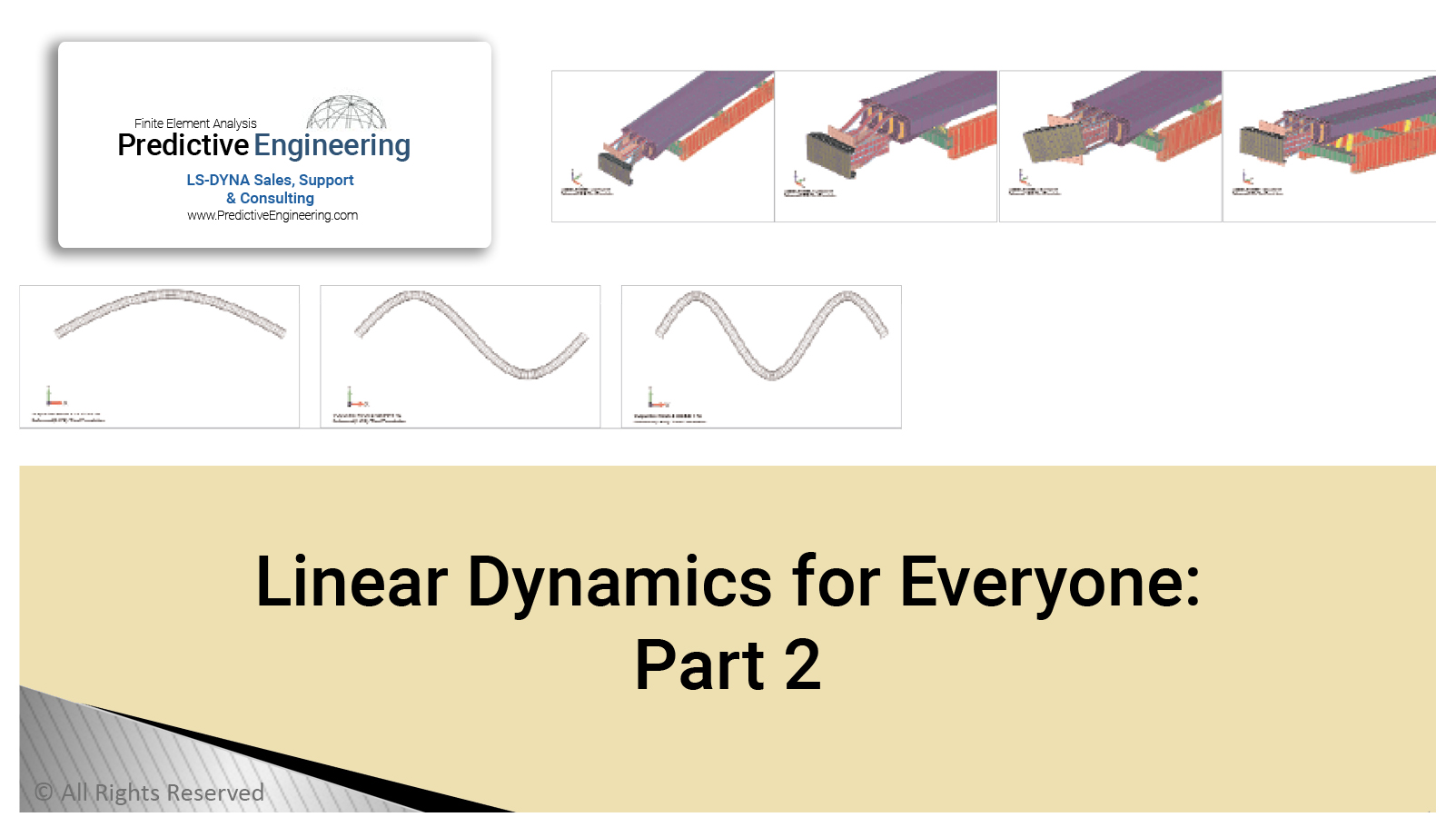Linear Dynamics part 2

Objective
Vibration analysis can show detailed structural behavior under dynamic loading
In Part 2 of the Desktop Engineering magazine article, we explore vibration analysis and how it can show detailed structural behavior under dynamic loading. This article shows how we leverage Part I to indicate how the structure might respond to a vibrating load without having to do any type of more complex analysis. In short, this article shows how to interpret your normal modes results like a “pro”.
The Dominators: Modes with Mass: An interesting fact about normal modes analysis is that we can associate a percentage of the structure’s mass to each mode. With enough modes, you get 100 percent of the mass of the structure, though for complex structures this can mean hundreds of modes. The common thought is that if you capture 90 percent of the mass of the structure that will be good enough. For now, we’ll start classically and then show what this concept means in a real-world engineering situation.
Making Your Ride Smooth As Silk: Ever wonder what makes a quiet ride in a motor vehicle? It has to do with avoiding modes that might be driven to resonance; that is to say, keeping the structure dynamically static in its mechanical behavior. In an analysis of a modern motor home, imagine the FEA model is highly idealized using beam elements for the small structural tubes, plate elements for the main longitudinal beams, and lots of mass elements to represent the engine, air conditioners, water and diesel tanks, and passengers. After a normal modes analysis, we have 45 modes ranging from2.3Hz to 15Hz.
Advanced Analysis Checklist: Don’t panic when you have eigenvalues right on top of your operating frequencies. Only natural frequencies with significant mass participation factors are important. Eigenmodes have directions as do their mass participation fractions. Investigate these directions and see if they correspond to your forcing-function direction. If they don’t (let’s say they’re orthogonal), then the structure will remain dynamically stable.
PDF Download

